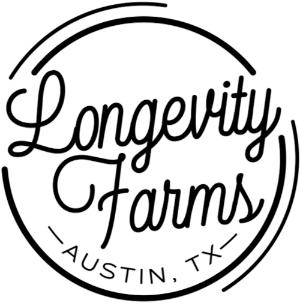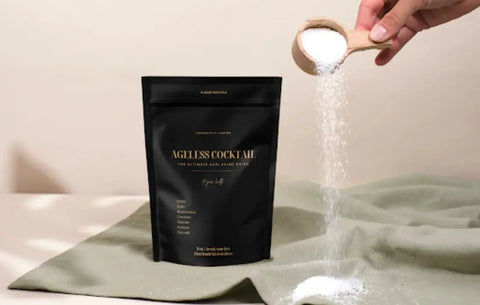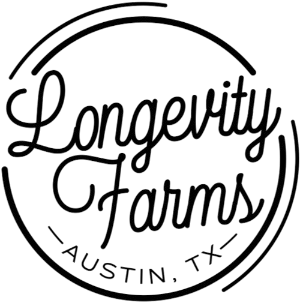In recent years, interest in anti-aging supplements has surged, and two molecules have emerged as key players in this conversation: NMN and NAD. Although they’re closely related in function, they are not the same. Understanding how these compounds function in the body helps us make informed decisions about what we consume for optimal health and longevity. With numerous options available on the market, clarity around NMN vs. NAD can help consumers avoid hype and instead focus on science-backed choices that support graceful aging from the inside out.
Biological Roles of NMN and NAD Explained
What Is NAD and Why Is It Crucial for Cellular Function
NAD stands for nicotinamide adenine dinucleotide. It's a molecule that exists in every cell of the human body and is essential for life. NAD helps convert the food we eat into the energy our cells need to function. Without it, our bodies wouldn’t be able to maintain energy levels, repair DNA, or fight off harmful stress. Over time, the amount of NAD in the body naturally declines, especially as we age. This decline can impact metabolism and how well our cells repair themselves.
NMN as a Precursor in the NAD Salvage Pathway
NMN, or nicotinamide mononucleotide, plays a crucial role in facilitating the body's production of NAD. Think of NMN as one of the building blocks that cells use to create NAD through a process called the salvage pathway. This pathway is crucial because it recycles raw materials already present in the body to maintain NAD levels. NMN is directly converted into NAD, supporting key functions such as energy production and DNA repair. By boosting NMN levels, the body may produce more NAD, helping to restore some of the benefits associated with higher NAD availability. These NMN supplement benefits make it a popular choice in the wellness community.
Which One Should You Supplement?
Choosing between the two comes down to how each one is absorbed and used. Because NAD is more difficult to directly enter cells, many people prefer to take NMN, which the body can naturally convert into NAD. NMN tends to yield better results in increasing cellular NAD levels and supporting energy production. People seeking energy metabolism boosters often consider NMN as the more reliable option. However, some advanced NAD products utilize special delivery methods to facilitate NAD's entry into cells more efficiently. Understanding your health goals can help determine which one works best for your needs.
Natural Ways to Boost NAD+ Levels
Diet plays a central role in maintaining NAD+ levels. Certain foods are naturally rich in nutrients that support the body’s NAD+ synthesis pathways. For example, foods high in niacin (vitamin B3) are particularly valuable, as niacin is a precursor required for NAD+ production. Incorporating niacin-rich foods such as chicken, turkey, beef, and fatty fish (like salmon and tuna) into your meals can help. Legumes, peanuts, and seeds also contribute, as do whole grains and brown rice. Dairy products, especially cow’s milk and yogurt, offer not only niacin but also tryptophan—an amino acid that the body can convert into NAD+. Green leafy vegetables, avocados, and mushrooms provide a plant-based boost, while fermented foods like kimchi, sauerkraut, and kombucha contain small amounts of NAD+ and compounds that support healthy gut flora, further aiding metabolic processes.
Beyond diet, physical activity is a well-documented way to increase NAD+ naturally. Regular exercise—whether brisk walking, cycling, swimming, or resistance training—stimulates the body’s energy demands, prompting cells to ramp up NAD+ production to meet increased metabolic needs. Exercise also enhances mitochondrial biogenesis, meaning your body creates more mitochondria (the “power plants” of your cells), which depend on NAD+ to function efficiently. Even moderate exercise performed consistently can have a meaningful impact on your cellular health and longevity.
Intermittent fasting is another lifestyle strategy that research suggests may elevate NAD+ levels. By extending the periods between meals, intermittent fasting encourages the body to switch from glucose metabolism to fat metabolism. This metabolic shift activates enzymes known as sirtuins, which rely on NAD+ to function and are linked to improved cellular repair and longevity. Popular approaches include the 16:8 method (fasting for 16 hours, eating within an 8-hour window) or alternate-day fasting. While not everyone’s lifestyle or health condition is suited to fasting, those who practice it often report increased energy and mental clarity. Additionally, practices that raise core body temperature can modestly boost NAD+ production. Heat exposure temporarily increases metabolic rate, prompting the body to produce more NAD+ to support cellular adaptation and recovery. While these effects are smaller than those from diet or exercise, they can be a useful addition to a comprehensive wellness plan.

Supplementation Methods and Practical Considerations
When deciding between NMN and NAD+ supplementation and choosing the most suitable delivery method, it's essential to align your decision with your health goals, lifestyle, and preferences. For those who have difficulty swallowing pills or want faster absorption, sublingual NMN (placed under the tongue) bypasses the digestive system and can deliver the compound more directly into the bloodstream, offering potentially quicker effects.
NAD+ supplementation, on the other hand, is often considered by individuals seeking more immediate or targeted results, especially for cognitive support or rapid recovery following illness or intense activity. Because NAD+ is a larger molecule and less efficiently absorbed through the digestive tract, alternative delivery methods are often recommended. Intravenous (IV) infusions provide the most direct route, delivering NAD+ straight into the bloodstream for maximum bioavailability. This method is typically administered in a clinical setting and may be preferred by those seeking intensive, short-term rejuvenation or cognitive clarity. However, IV infusions require time, cost, and professional oversight, making them less practical for everyday use. For users who want flexibility and convenience, self-injection kits with pre-measured doses of NAD+ are emerging as an option, allowing individuals to manage their supplementation at home under medical guidance. Nasal sprays are another innovative delivery method, offering a non-invasive and rapid way to deliver NAD+ directly to the bloodstream via the nasal mucosa. This can be particularly appealing for those targeting cognitive benefits or seeking an alternative to pills and injections.
Benefits of NMN Supplements for Cellular Health
NMN Benefits
ATP, or adenosine triphosphate, is often called the “energy currency” of cells. NMN helps increase NAD levels, which in turn fuels ATP production. This is crucial for maintaining energy in tissues that require a constant supply, such as muscles and the brain. But NMN does more than just support energy. It also plays a part in regulating circadian rhythms—the body’s internal clock that controls sleep and wake cycles. NAD influences proteins involved in the body’s daily rhythms, which helps promote restful sleep and alert mornings. The benefits of NNM may offer improved energy throughout the day and better recovery at night.
NMN and Stress Response Pathways in Aging Cells
As cells age, they become more vulnerable to stress from toxins, inflammation, and everyday wear and tear. One reason is that older cells don’t repair damage as efficiently as younger ones. NMN may support these stressed cells by enhancing NAD-dependent repair processes. This includes the activation of enzymes that respond to DNA damage and regulate inflammation. By maintaining these pathways, NMN may help protect against age-related decline. This effect is a significant reason why NMN is among the most promising anti-aging supplements on the market. It supports resilience in the face of environmental and internal stress.
NMN Health Benefits
Many popular energy boosters, like caffeine or sugar, provide a temporary spike in alertness, followed by a crash. NMN works differently. It supports energy at the cellular level by increasing NAD, which helps your body produce energy more naturally and steadily. Unlike stimulants that affect the nervous system, NMN works within your metabolism to enhance endurance and reduce fatigue. This makes it an ideal choice for individuals seeking to support long-term vitality without the side effects of stimulants. It also complements other rejuvenating wellness tonics, especially when incorporated into a balanced daily routine focused on cellular longevity.
Side Effects and Tolerability
When considering NMN (nicotinamide mononucleotide) and NAD+ (nicotinamide adenine dinucleotide) supplementation, it is essential to understand their potential side effects and overall safety profiles.
-
Digestive Discomfort: These symptoms are typically short-lived and often diminish as the body adjusts. One possible reason for this discomfort is the body’s metabolic shift as it begins to process NMN and boost NAD+ production at the cellular level. To minimize this effect, it's best to start with a low dose and increase gradually over time. Taking NMN with a small meal can also help buffer its impact on the digestive tract. Additionally, ensuring proper hydration and avoiding other supplements that irritate the stomach (such as iron or high-dose vitamin C) can help reduce this temporary side effect.
-
Insomnia Linked to Energizing Effects: While this is often seen as a benefit during the daytime, it may interfere with sleep when taken too late in the day. If you find yourself staying awake longer than usual or waking up more frequently during the night, consider shifting your NMN intake to the morning hours. This timing not only supports natural circadian rhythms but also allows you to take advantage of NMN’s energizing properties when they’re most beneficial. Avoiding stimulants like caffeine or pre-workouts in the evening will further reduce the likelihood of nighttime restlessness.
-
Flushing or Warmth: This reaction is typically brief and may be linked to increased blood flow or vasodilation as the supplement begins to take effect. While not harmful, it can be surprising if you’re not expecting it. This sensation is usually more common when NMN is taken on an empty stomach or in higher doses. Unlike the flushing caused by high doses of niacin (vitamin B3), NMN-related warmth tends to be less intense and does not involve significant redness or itching.
-
Mild Fatigue: As the NAD+ pathway becomes more active, cells may temporarily divert resources to support mitochondrial function or detoxification, leaving you feeling a bit drained at first. This type of fatigue is generally short-term and should resolve within several days to a week. Supporting your body through this transition with hydration, adequate sleep, and nutrient-rich meals can help ease the adjustment. If fatigue persists beyond the adjustment period, consider whether your NMN dose is suitable or if it may be interacting with other supplements or medications in your routine.
While these NNM supplement side effects are generally short-lived, it’s always wise to start with a low dose and observe how your body reacts before increasing the amount.
Supplement Formats and How to Use Them
Powders vs Capsules
Powders allow for flexible dosing and are often mixed into drinks, but they may have a bitter taste that some people find unpleasant. Capsules offer convenience and accurate dosing, making them a popular choice for people who want a quick daily routine without extra steps. Liposomal NAD products utilize specialized technology to protect the active ingredients as they pass through the digestive system, thereby increasing absorption. Advanced formulations are gaining popularity among individuals seeking more effective NAD booster supplements without increasing the dosage. The format you select depends on your lifestyle and how quickly you want to see results.

Functional Beverages and Natural Anti-Aging Drink Options
There is growing interest in beverages that combine NMN or NAD with other nutrients to create easy, on-the-go wellness solutions. These drinks often include antioxidants, electrolytes, and adaptogens to support a broader spectrum of health benefits. Some are designed to be taken in the morning to boost energy, while others are meant for recovery or evening relaxation. A natural anti-aging drink that includes NMN can fit into daily routines seamlessly, especially for those who dislike pills or powders.
Enhancing NAD Levels Through Lifestyle and Stacking
Combining NMN with Resveratrol and Quercetin
Resveratrol activates a family of proteins called sirtuins, which help regulate inflammation, metabolism, and stress resistance. Quercetin, a plant-based antioxidant, supports the clearance of senescent cells, which are damaged cells that accumulate with age and contribute to inflammation. Together with NMN, these compounds can create a more robust internal environment that promotes resilience and energy at the cellular level. These represent the next wave of energy metabolism boosters, as they target multiple aging pathways simultaneously for more comprehensive benefits.
Stacking NAD Boosters
Stacking refers to the practice of combining several supplements that complement each other’s effects. NAD boosters, such as NMN, are often combined with CoQ10, creatine, and alpha-lipoic acid (ALA) to support cellular energy, cognitive health, and mitochondrial function. CoQ10 is recognized for its role in heart health and energy transfer, while creatine enhances muscle strength and supports brain function. ALA helps regulate blood sugar and protects against oxidative stress. This kind of strategic supplement use isn’t about taking more but taking smarter. When used in the right combinations, NAD and aging can help sustain focus in a way that feels balanced rather than overwhelming.
Tracking Progress
It's important to track how your body responds over time. These practices can help you fine-tune your dosage and ensure you're getting the most out of your supplementation protocol:
-
Measure Resting Heart Rate: Resting heart rate (RHR) and heart rate variability (HRV) are two powerful, non-invasive biomarkers of systemic health and stress adaptation. RHR provides insight into cardiovascular efficiency, while HRV reflects the balance between your sympathetic and parasympathetic nervous systems. A lower resting heart rate (RHR) and higher heart rate variability (HRV) generally indicate better recovery, resilience, and autonomic balance. Using wearable devices allows you to collect and compare daily metrics effortlessly. Subtle physiological shifts signal improvements in mitochondrial energy output and nervous system regulation. Logging these changes over time helps you track progress objectively and understand whether your supplement routine is aligning with your health goals.
-
Track Sleep Stages: As mentioned, high-quality sleep is when your cells undergo the most restorative processes, including tissue repair and hormonal balancing. Apps can track your total sleep duration, REM and deep sleep cycles, and disruptions throughout the night. These metrics can help you evaluate whether the supplements are improving your sleep efficiency and recovery profile. A more stable sleep score and fewer nighttime awakenings may indicate a nervous system that’s better regulated, or an increase in cellular resilience. While you may feel more rested subjectively, having data to back up these impressions helps you measure real-world outcomes.
-
Log Daily Energy: One of the most valuable but often overlooked tracking tools is a simple journal. Writing down how you feel each day provides qualitative insights that wearables can’t capture. Pay attention to specific patterns: Are your morning energy levels improving? Are you staying more alert throughout the afternoon without relying on caffeine? Are moments of mental fatigue becoming less frequent? Logging these details for at least a few weeks allows you to spot trends that might otherwise be missed. You can also track when you take your supplements to determine which timing best supports your daily rhythm. A few bullet points a day can be enough to paint a bigger picture of how NMN or NAD is influencing your cognitive and emotional landscape.
The key is to track deliberately so that you can optimize your protocol and make meaningful adjustments. With the right feedback loop, your wellness routine becomes intelligently guided.
Frequently Asked Questions About NMN and NAD+
These are the most common questions about their roles, benefits, and how to approach supplementation, helping you make informed choices for your health and longevity.
What is NMN?
NMN (nicotinamide mononucleotide) is a naturally occurring compound that serves as a direct precursor to NAD+, supporting the body’s energy production, DNA repair, and overall cellular health.
What is NAD+ and why is it important?
NAD+ (nicotinamide adenine dinucleotide) is a vital molecule found in every cell, essential for turning food into energy, repairing DNA, and protecting against cellular stress.
How are NMN and NAD+ related?
NMN is converted into NAD+ through the body’s salvage pathway, helping to maintain optimal NAD+ levels as we age and supporting many critical cellular functions.
What are the main benefits of NMN supplementation?
Supplementing with NMN may support steady energy levels, improved metabolism, healthier aging, and better stress resilience by increasing NAD+ production within cells.
Can you supplement directly with NAD+?
Direct NAD+ supplementation is less efficient, as NAD+ is not easily absorbed by cells. Most people prefer NMN, which the body can convert into NAD+ more effectively.
Is it safe to take NMN or NAD+ supplements?
Both NMN and NAD+ are generally well-tolerated, with most side effects being mild and temporary. Always consult a healthcare provider before starting any new supplement regimen.
Who should consider NMN or NAD+ supplementation?
Adults seeking to support energy, healthy aging, or cellular repair may benefit from NMN or NAD+ supplements. Individual needs and health goals should guide your choice.
Can NMN and NAD+ supplements be taken together?
Taking both is usually unnecessary, as NMN alone is sufficient to boost NAD+ levels. Combining them does not appear to provide additional benefits for most users.
The decision to use NMN or NAD supplements ultimately depends on your personal goals and how your body responds. It's essential to evaluate how each form interacts with your body and how it aligns with your health journey. Paying attention to subtle shifts can guide your path over time. By staying mindful and responsive, you’ll be better equipped to choose the most effective support for your long-term vitality. A consistent routine supported by lifestyle changes and NMN benefits can pave the way for improved energy and cellular wellness at any stage of life.




